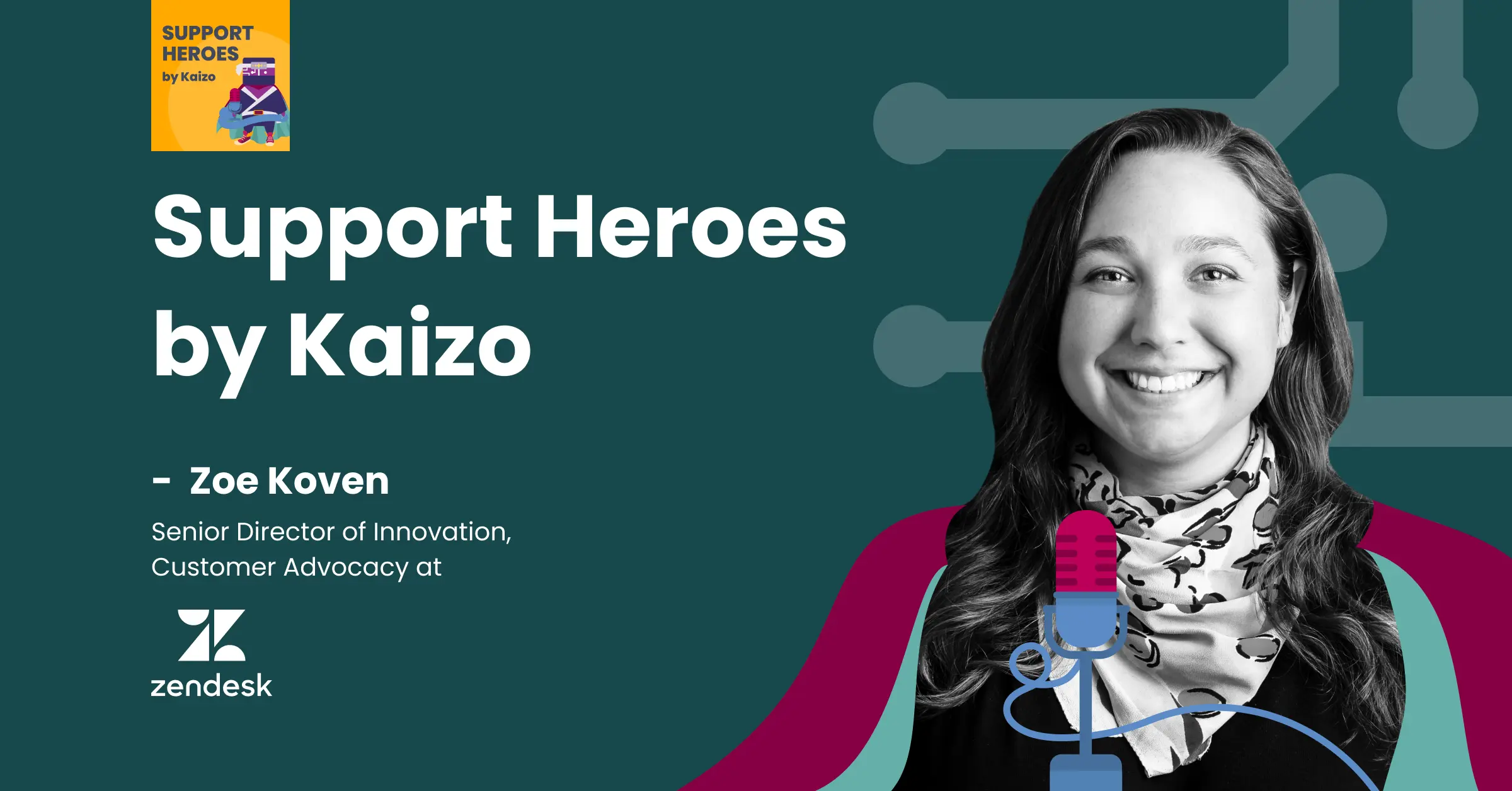Click ‘subscribe’ in the bottom right of the player to listen or download from Apple Podcast, Spotify, Google Podcast, and Amazon Music.
The thirty-sixth episode of Support Heroes by Kaizo featured Zoe Koven – Senior Director of Innovation & Customer Advocacy at Zendesk.
In this episode, Zoe offers her advice and guidance on change management in customer service. In order to improve any department, change must take place. Managing that change successfully and coming to a result that’s better for the customer is always beneficial to support. Following are key steps to take when improving customer service through change.
Understand the change
“The biggest mistake is treating the change as one thing that affects everyone the same way”
- If you’re thinking about improving your customer service, change management is what will help you realise that improvement. There are two key things to keep in mind: first, understand why you want to change and what you want to achieve from it; second, understand the specifics of how people will be affected by the change.
- Change in customer service is something that can be measured. To understand whether a change should take place, create a hypothesis. For example, “moving to live chat will increase customer satisfaction”. Then create a data-driven way to test that hypothesis before and after the change.
- Running a pilot or beta is a great way to test whether an idea will improve your customer service or harm it. It also offers you an opportunity to test your hypothesis before causing any disruption. Based on that test, you can set some achievable targets to measure the success of the change. Setting unachievable targets will do more harm than good so invest the time and effort beforehand.
- Understanding the specifics of how the change will affect employees is really the key to successful change management in customer service. Group stakeholders together and consider how these groups will be affected. Think about how the change impacts the processes, technology and skills frontline staff need to perform every day. The extent that each of these factors will change will inform how much support each employee needs to get through the change.
- Get information directly from the source. Conduct interviews with agents, team leads, etc. to test ideas. Form points of contact early on so you can consistently source information once the change is underway. Before rolling out a change, test your messaging directly with people, and see how they respond to your plan and motivations.
Create motivation for the change
“By default people won’t be motivated. If you don’t motivate them through the change, they won’t go through with it”
- A fallacy Zoe pointed out was: awareness does not equal motivation. Just because people are aware of a change and aware of the benefits, does not mean they are motivated to go through it. For example, while at Zendesk, Zoe managed the change from email-based messaging to live chat. The hypothesis was that customers prefer live chat; switching would therefore improve Zendesk’s customer service and their bottom line.
- Mass communication is effective in making people aware of the information. In Zendesk’s live chat move, this was used to generally introduce the change to people. But this is not enough to create motivation. As such, Zoe and her team spoke to every role in the department. Speaking directly to managers about how the change will affect them, what the change team will do to support them and why the change will benefit them and their team.
“Not every change is going to make everyone happy. You need to acknowledge that. It is your job to make [the change] as good as possible for those going through it”
- Moving from email to live chat was a huge change for the customer service department. Almost every aspect of the support department changed as a result. Explaining the specifics to managers allows them to motivate those under them. For an agent, having their team lead explain the change in a 1-on-1 may be most convincing. For that team lead, having their manager brief them and follow up on a question may be the moment they are convinced. Maximise the opportunities for people to be convinced that the change is good.
Create reinforcement mechanisms
“Reinforcement is the most important step…give managers something close to a playbook and change the programme based on feedback”
- Reinforcement means creating processes to support the change. This should be planned out before the change and adapted based on the needs of employees. The amount of preparation and the detail of the training should be dependent on the size of the team and the complexity of the change.
- During the live chat switch, Zoe and her team gave managers a lot of support so that they could guide their teams through the change. Managers received new metrics, dashboards and coaching points to think about.
- During the change, the entire support department switched to a ‘daily standup’ format. Every day managers could source information on how teams were finding the change and what they needed to progress successfully. Gathering data and adapting is as important as careful planning when managing a change in customer service. Service levels may dip slightly in the short term but successful change management will short that time signifcantly.


